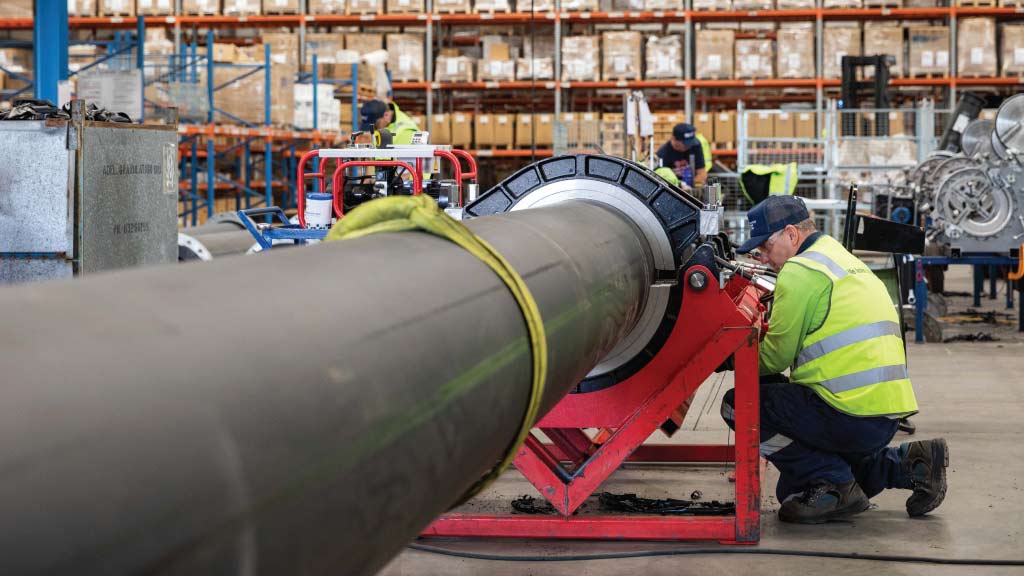How to Prevent Oil Pipeline Leaks with Maintenance Digs

Wondering How to Prevent Oil Pipeline Leaks?
If your operations rely on oil pipelines, leak prevention is critical. Even world leaders like Canada’s Enbridge, responsible for transporting over 14 billion barrels of crude, focus heavily on minimising risk. Their impressive 99.9993% safe delivery rate highlights how small vulnerabilities can still create big problems.
Oil leaks damage the surrounding environment, throw work schedules and budgets off with emergency repairs, and threaten the business’s reputation. One way Enbridge keeps the number of emergencies down is through preventative maintenance digs (or ‘integrity digs’). That’s why ways to prevent oil pipeline leaks are necessary.
Preventative maintenance digs do exactly what the name says.
- Preventative – by working on pipes before they leak, bigger problems are prevented.
- Maintenance – the work done maintains the current pipes, restoring them to the way they were rather than making any changes to the network.
- Dig – unlike automated inspection, this work is done by people who dig down to the pipe and work on it directly.
While Advanced Piping Systems supplies pipe that is almost always destined for an above-ground installation, you can still apply the principles from this article to your pipeline.
Monitoring Is Essential, But Seeing Is Believing
Enbridge scans pipes internally with in-line inspection tools. As the company explains, ‘when an in-line inspection finds something that requires a closer look, we excavate the pipe…examine it and make any necessary repairs.’
Typical issues fixed through preventative maintenance digs include:
- corrosion
- cracks
- dents
- external damage.
Follow these steps to prevent oil pipeline leaks:
Step 1: Start with a Clean Inspection
A typical dig begins with careful removal of topsoil and subsoil, keeping layers separated. After exposing the pipe, workers clean and strip its coating to begin inspection.
Step 2: Evaluate and Act
Best case? Nothing needs fixing—just recoat and backfill.
More common? Damage is found and addressed on the spot.
Repairs might range from spot-cleaning corrosion to cutting and welding in a replacement section of pipe. In every case, testing is conducted to ensure that everything meets the specifications.
No News Is Good News
The first possibility is that nothing needs fixing. All that’s left to do is to recoat the pipe and fill the hole.
Enbridge still sees value in digs like this. As they put it, every visual inspection “adds to our overall knowledge about the line’s condition”.
For landowners, CAEPLA’s Pipeline Observer blog suggests that preventative maintenance digs are like medical check-ups. ‘Similar to a CT scan that ends with no tumour, you can focus on the relief.’
Step 3: Restore the Site
After the repairs, the pipeline is recoated and reburied. Topsoil is replaced, and the area is cleaned up, often looking like nothing ever happened.
Bad News Is Also Good News
On the other hand, preventative maintenance often identifies some repair or replacement work to be done. This is a win for your inspection process! A little bit of work now will save a lot of work later.
Preventative maintenance is safer, cleaner, and cheaper than dealing with a leaky pipe. It also adds to the pile of emergencies that you’ll now never have to deal with.
For buried pipes, it also means that you’ll be putting back in place a stronger, better quality pipe.
Repairs and Replacements
If the pipe does need work, that could be anything from cleaning and coating a bit of corrosion to removing a section and welding in a replacement length. Work can take a couple of days, or as long as a fortnight.
Whatever work is done, tests follow to make sure that everything is to standard. The pipe is recoated, and then everything is covered up again.
Putting Things Back the Way They Were
Once the pipe is fit for service, the excavation is backfilled, topsoil returned, and the site cleaned up. In buried pipelines, the aim of a preventative maintenance dig is to leave everything the way it should be.
Enbridge’s 99.9993% record of safe delivery shows that they’re a world leader in oil pipe maintenance. By learning from their practices like preventative maintenance digs, you’ll begin to see how many 9s you can line up in your own reports.
Keep Learning From the World’s Best
Keen to pick up more tips and habits, like ways to prevent oil pipeline leaks? Subscribe to our mailing list at the bottom of the homepage, and you’ll hear about it every time we have something that will help you work smarter.

